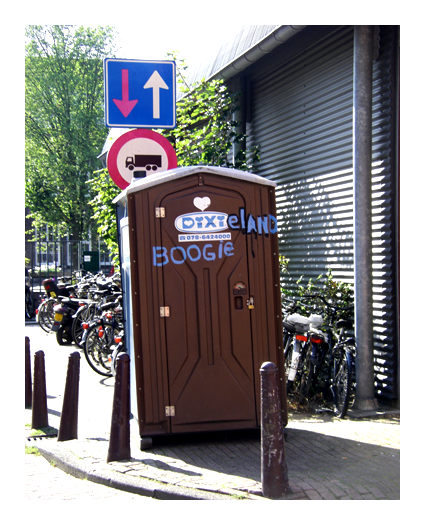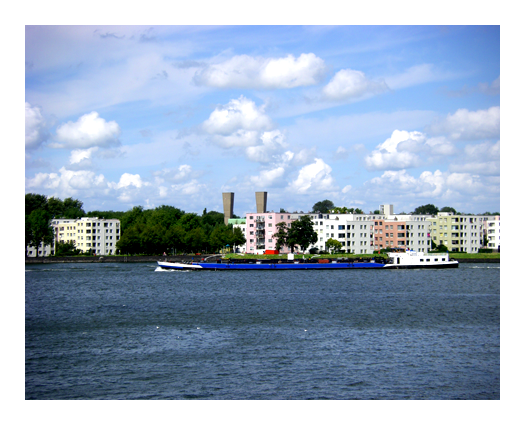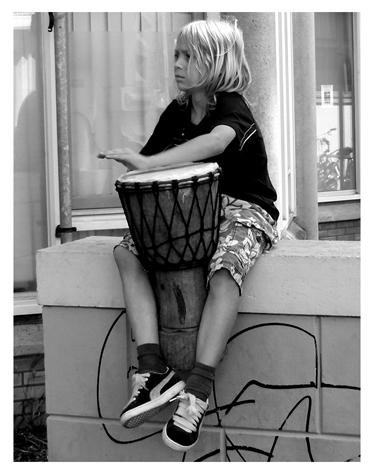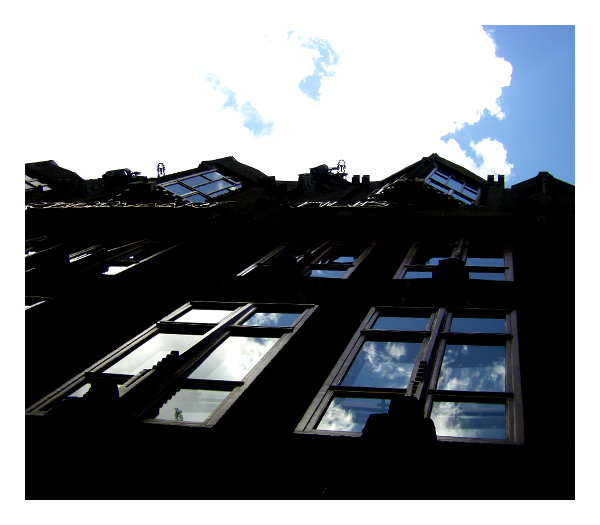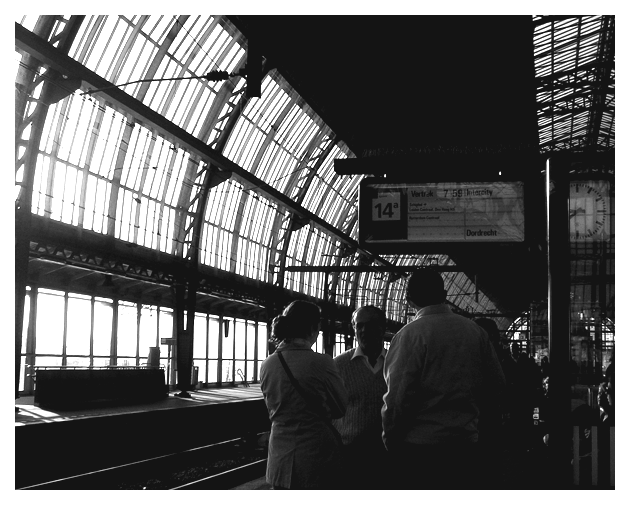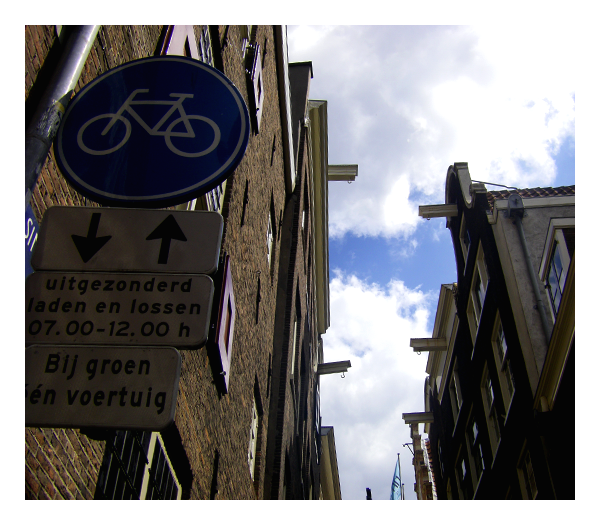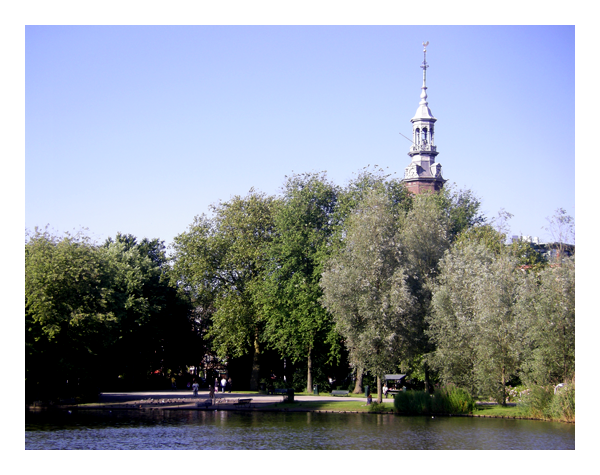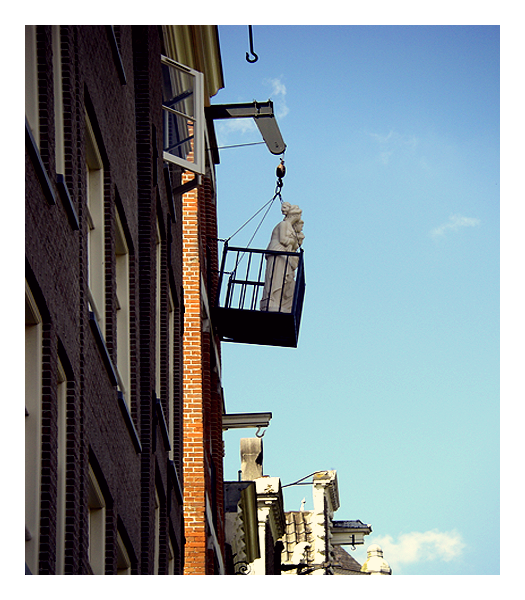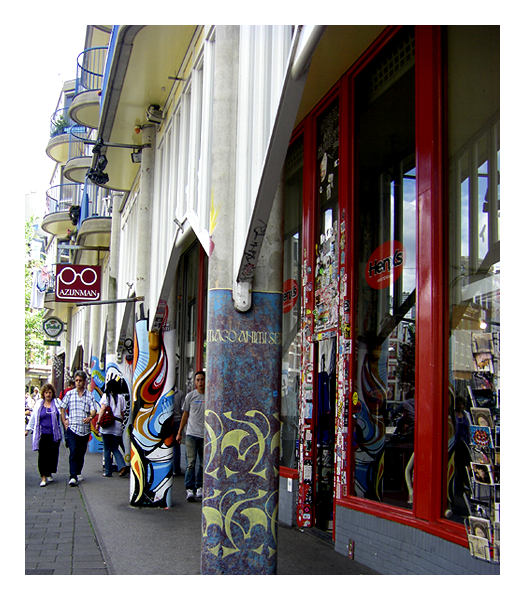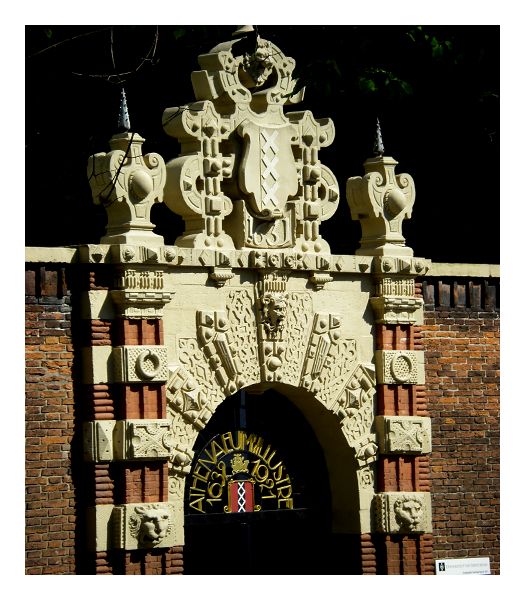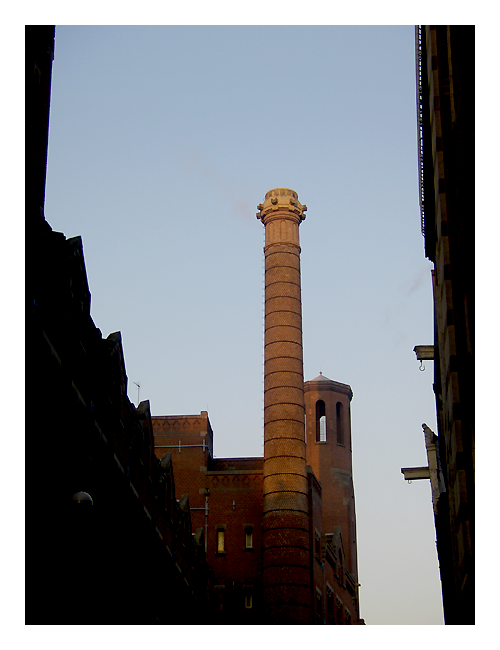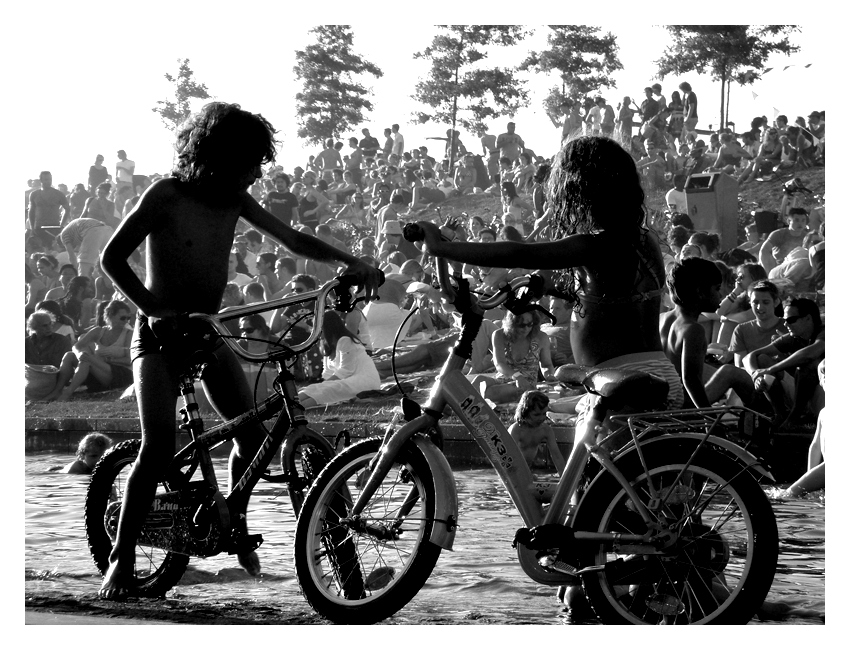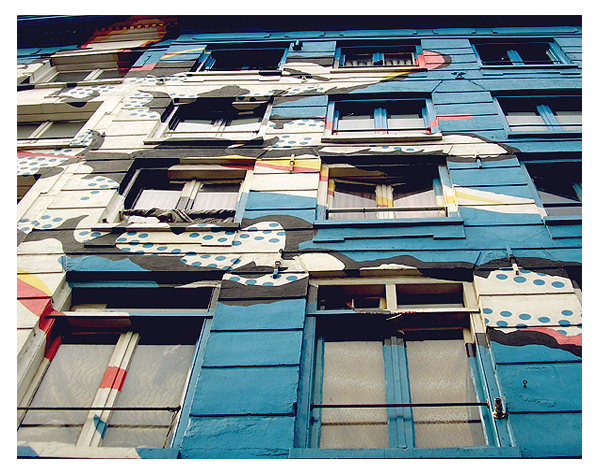
The better graffiti-work on a squatted house in the Spuistraat.
Despite efforts by the national government to legally forbid squatting, Amsterdam's squatters' community still seems to be holding strong. In some areas, squatters have even opened bars in their occupied houses, offering consumptions for fair prices. Without being a squatter myself (I feel a lot more secure paying rent), I have met quite some people who live in a house they 'occupied'. These people were always open-minded and decent, and I support their motives for squatting wholeheartedly (it's really difficult to find an appartment or a room within the city, while on the other hand, many houses have been empty for years). However, some violent incidents with squatters have given the community a bad name. One of the incidents took place in
Vrankrijck, the house you can see on the photo. A squatter attacked someone in there, and later refused access to the rescue units who came to save the victim's life. The victim did not survive. As you can see, this is truely a house with a story.
